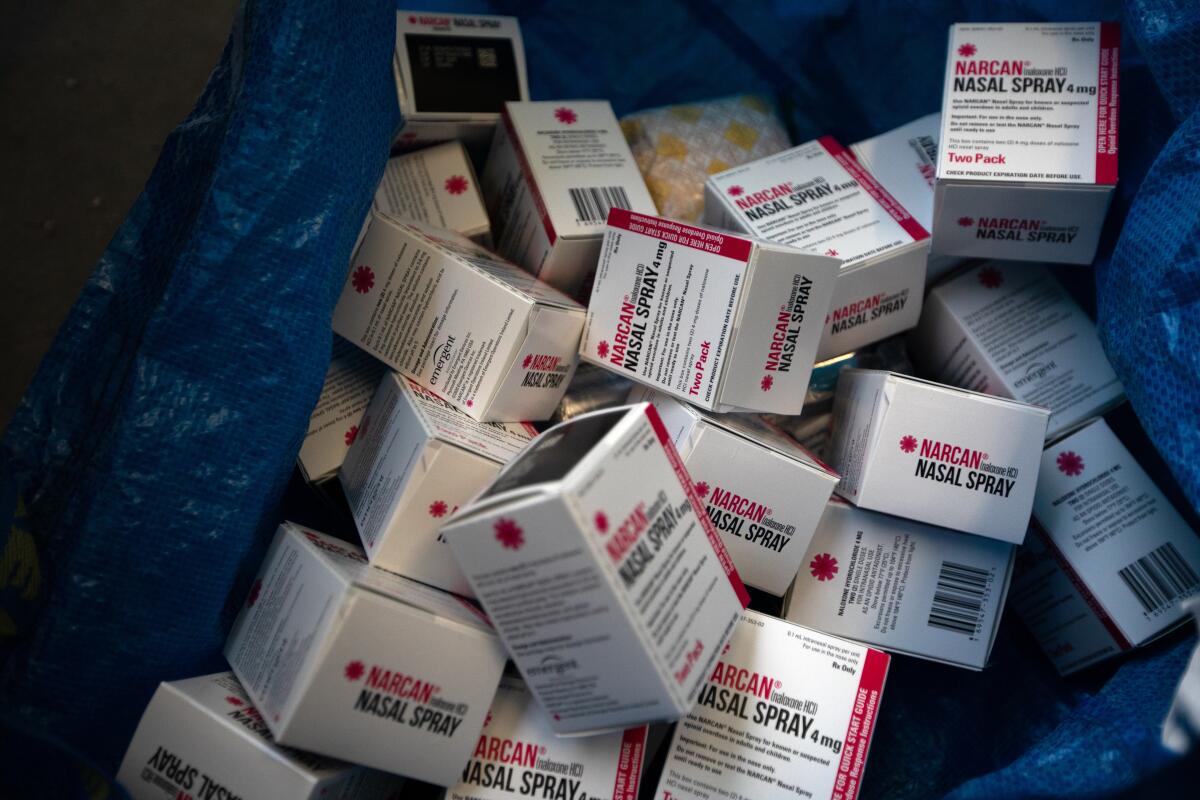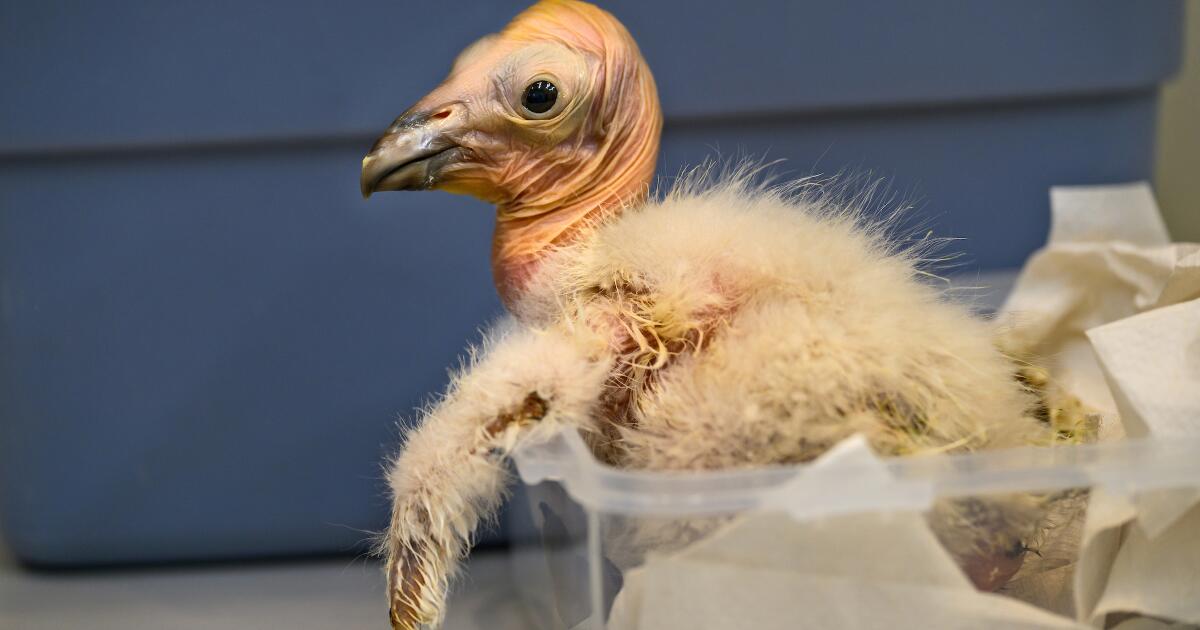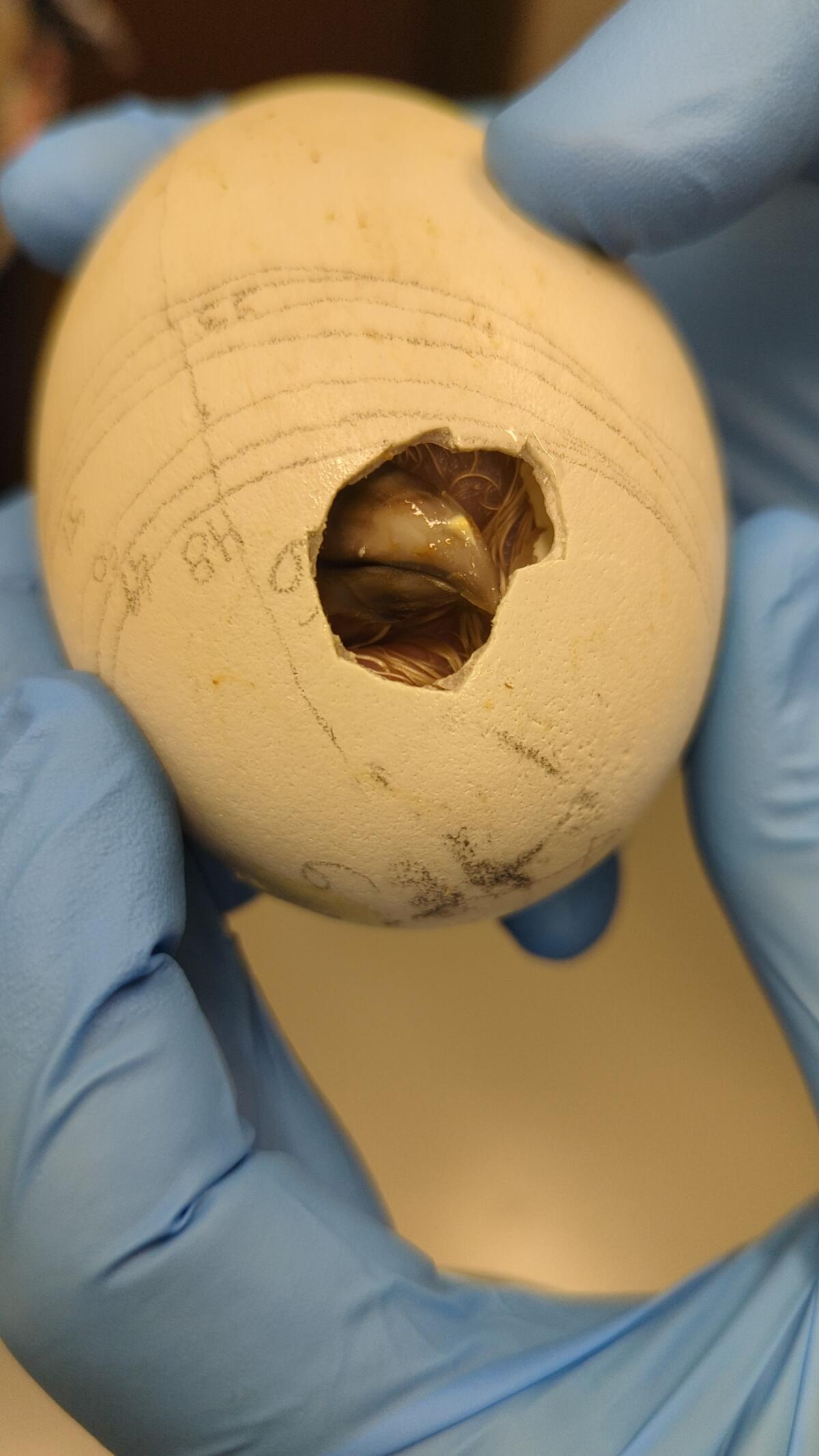Science
California communities are banning syringe programs. Now the state is fighting back in court

As Indiana officials struggled to contain an outbreak of HIV among people who injected drugs, then-Gov. Mike Pence reluctantly followed the urgings of public health officials and cleared the way for an overwhelmed county to hand out clean syringes.
Pence was far from enthusiastic about launching the program in Scott County, but after it rolled out in 2015, the percentage of injection drug users there who said they shared needles dropped from 74% to 22%. Within a few years, the number of new HIV infections plummeted by 96% and new cases of hepatitis C fell by 76%.
The Sierra Harm Reduction Coalition wanted to keep those same diseases in check in California. The tiny nonprofit got approval from the state to deliver syringes in El Dorado County to prevent the spread of life-threatening illnesses.
Yet when the program was discussed at a December meeting of the county’s Board of Supervisors, the success story in Indiana held little sway. Faced with complaints about discarded needles and overdose deaths, the supervisors voted to prohibit syringe programs in the county’s unincorporated areas.
“These programs may work in other parts of California and throughout the United States, although I have my doubts,” Sheriff Jeff Leikauf said at the meeting. “El Dorado County does not want or need these types of programs.”
El Dorado is among a growing number of California communities that have banned syringe programs, testing the state’s power and political will to defend them as a public health strategy. It is part of a broader pushback against “harm reduction” — the practical philosophy of trying to reduce the negative effects of drug use — as overdose deaths have soared.
Now California is fighting back. In a recently filed lawsuit, the Department of Public Health argued that local ordinances prohibiting syringe programs in El Dorado County were preempted by state law, making them unenforceable.
The state is seeking a court order telling El Dorado County and the city of Placerville, its county seat, to stop enforcing their bans and allow syringe programs to resume.
An El Dorado County spokesperson said Monday that the county does not comment on pending legal issues. Its district attorney, however, said he was outraged to learn of the lawsuit, saying that state leaders were “seeking to impose the normalization of hardcore drug use.”
“Don’t come into our county and double down on your failed policy,” El Dorado County Dist. Atty. Vern Pierson said in a statement. “Allowing addicts to use fentanyl and other hardcore drugs is exactly what has caused other California counties to experience a death rate that is out of control and getting worse.”
Mona Ebrahimi, the city attorney for Placerville, said the city had put a 45-day temporary moratorium in place “to study the ongoing effects of syringe service programs in the city.”
“The city wants to protect the health, safety and welfare of its residents,” Ebrahimi said.
The California Department of Public Health has long endorsed handing out sterile syringes as a proven way to prevent dangerous infections from running rampant when people share contaminated syringes. Researchers have linked syringe programs with a roughly 50% reduction in HIV and hepatitis C.
“It sounds crazy: ‘Wait, you want to give out the tools to people to do this thing that we all agree is a bad idea?’” said Peter Davidson, a medical sociologist at UC San Diego. But it works, said Davidson, who called the programs “probably the best studied public health intervention of the last 70 years.”
Public health officials also see them as a crucial way to reach people who use drugs and link them to addiction and overdose-prevention services. In Seattle, for instance, researchers found that injection drug users who started going to a needle exchange were five times more likely to enter drug treatment than those who never went.
Signs direct visitors to the syringe-exchange program at the Austin Community Outreach Center in Austin, Ind., in 2015. The program was set up to curb an outbreak of HIV among people who injected drugs.
(Darron Cummings / Associated Press)
And in California, harm reduction groups have been particularly effective in getting Narcan — a nasal spray that can reverse opioid overdoses — into the hands of people who need it.
It’s “hugely important to reduce overdose in the community, and these are the programs that do that,” said Barrot Lambdin, a health policy fellow at RTI International who studies the implementation of health interventions.
Yet leaders in some cities and counties have strenuously rejected the health benefits of syringe programs.
In El Dorado County, local leaders asserted that the efforts of the Sierra Harm Reduction Coalition had not “meaningfully reduced” HIV or hepatitis C cases since its syringe program began four years ago and said the free needles were ramping up the risk of deadly overdoses, which they argued were a bigger threat.

The El Dorado County Courthouse in Placerville, Calif.
(Max Whittaker / For The Times)
Alessandra Ross, a harm reduction expert at the California Department of Public Health, disputed such arguments in a letter to county officials. Ross pointed out that in just one year, the coalition handed out more than 2,200 doses of medication to reverse opioid overdoses, saving at least 421 lives. Without the group’s efforts, she wrote, “El Dorado County could have potentially lost more than ten times as many people to overdose.”
Under state law, the California Department of Public Health has the authority to approve syringe programs anywhere that deadly or disabling infections might spread through used needles, “notwithstanding any other law” that might say otherwise.
The agency argued that the “significant state and public interest in curtailing the spread of HIV, hepatitis, and other bloodborne infections extends to every jurisdiction in the state, especially since Californians travel freely throughout the state.”
After El Dorado County prohibited syringe services in unincorporated areas, the state public health department adjusted its authorization for the Sierra Harm Reduction Coalition program, limiting its operations to Placerville. In the court filing, the agency said it made the change out of concern for the coalition’s staff and volunteers, who could be at risk of arrest if they provided syringes in the unincorporated areas.
The nonprofit said when it stopped providing syringes outside of Placerville city limits, roughly 40% of its clients were cut off. In February, Placerville city officials passed their own urgency ordinance banning syringe programs for 45 days, exempting needle provision at health facilities.
Ebrahimi, its city attorney, said officials took that step “after CDPH concentrated their use by authorizing them only in Placerville and nowhere else in the county.”
The Sierra Harm Reduction Coalition stopped providing syringes in Placerville as well, according to the state lawsuit. The coalition did not respond Monday to requests for comment on the suit.
El Dorado County and Placerville are not alone: A wave of local bans went into effect last year in Placer County after a harm reduction group from Sacramento sought state approval to hand out clean syringes. The county’s sheriff and its probation chief said in a letter to the state that the syringe program proposed by Safer Alternatives thru Networking and Education, or SANE, would “promote the use of addicting drugs” and lead to more “dirty needles discarded recklessly in our parks.”
The Placer County Board of Supervisors voted unanimously to ban syringe programs in its unincorporated areas. Cities including Auburn, Loomis and Rocklin banned them too.
“We are the ones who should make these kinds of decisions,” then-Mayor Alice Dowdin Calvillo said at a September meeting of the Auburn City Council, “and not allow the state to just bully us.”
Public health researchers stress that studies have found that free needle programs do not increase crime or drug use, or worsen syringe litter. Yet as much of Placer County became a no-go zone, SANE withdrew its application for a syringe program there.
“Our political processes are not well set up for us to make reasoned, scientifically sound judgments about public health,” said Ricky Bluthenthal, a USC sociologist whose research has documented the effectiveness of syringe programs. It doesn’t help that “the populations at risk are often marginalized or not politically active.”
Our political processes are not well set up for us to make reasoned, scientifically sound judgments about public health.
— Ricky Bluthenthal, a USC sociologist who studies syringe programs
The California Department of Public Health declined to address whether it planned to challenge local bans on syringe programs elsewhere in the state, saying it “cannot comment on active litigation strategy.”
Syringe programs have long faced public skepticism: In a 2017 survey, only 39% of U.S. adults said they supported legalizing them in their communities.
Experts say the programs have faced increasing jeopardy as public concern wanes about the threat of HIV and frustration swells over other problems like soaring numbers of overdose deaths and the spread of homeless encampments. Even in Indiana’s Scott County, local leaders voted three years ago to shutter its needle exchange.
Clashes are also arising because programs are making moves into new parts of California, bolstered in some cases by state funding. California officials also have taken steps to help syringe programs overcome local opposition, including exempting them from review under the California Environmental Quality Act.
“It’s not surprising that cities and counties are motivated to protect the public health and safety of their residents through whatever tools they have at their disposal,” said attorney David J. Terrazas, who represented a group that successfully sued to overturn state approval of a syringe program in Santa Cruz County.
In that case, a state appeals court ruled last year that the California Department of Public Health conducted an insufficient review of a program run by the Harm Reduction Coalition of Santa Cruz County. The department didn’t do enough to consult with law enforcement agencies in the area, among other shortcomings, the court said.
Although the state health department had considered some comments from law enforcement, “it never engaged with them directly about their concerns,” the appeals court concluded. Internal records showed department staff had decided not to respond to some of their comments and called one police chief an “imbecile.”
Terrazas said local officials are best poised to know what works for their communities. But Denise Elerick, founder of the Harm Reduction Coalition of Santa Cruz County, argued it made no sense for law enforcement to hold sway in public health decisions.
“We wouldn’t consult with them on what to do about COVID,” Elerick said.

A bag is filled with boxes of Narcan nasal spray, one of several harm-reduction supplies distributed to people living on the street in Los Angeles.
(Francine Orr / Los Angeles Times)
Weeks after the court ruling, the state health department rolled back its approval for a syringe program in Orange County that would have been run by the Santa Ana-based Harm Reduction Institute, saying it wanted to consult more with local officials.
The decision was celebrated by city leaders in Santa Ana, who had banned syringe programs in 2020 and sharply opposed efforts to restart one. At a recent meeting, interim city manager Tom Hatch said a previous program was “an epic failure” that left its downtown littered with used syringes.
Orange County is currently the most populous county in the state without any syringe services programs — to the alarm of health researchers who found that syringe reuse increased after a local program was shut down.
The Santa Cruz court ruling was also invoked by the Santa Monica City Council, which directed city officials to investigate how Los Angeles County came to approve a program run by the Venice Family Clinic. That program sends outreach workers into Santa Monica parks once a week to offer clean syringes, Narcan and other supplies and connect people with healthcare, including for addiction.

Devon O’Malley, left, a harm reduction case manager with the Venice Family Clinic, hands out Narcan to Ken Newark at Tongva Park in Santa Monica.
(Mel Melcon / Los Angeles Times)
Critics want the program to relocate indoors, which they say would better protect parkgoers from discarded syringes. In addition, “if someone has to walk inside, there’s a chance for counselors to suggest strongly that it’s time for them to get off the drugs,” said Santa Monica Mayor Phil Brock, who wants the city to formally express its opposition to the program. “We can’t just facilitate their demise.”
Last month, a group called the Santa Monica Coalition filed suit to get L.A. County to halt the program it approved, saying it should instead be in a government building.
But Venice Family Clinic staffers said unhoused people can be reluctant to leave behind their belongings to go elsewhere. Even offering services out of a van reduced participation, said Arron Barba, director of the clinic’s Common Ground program.
“Bringing the service directly to the people is what we know works,” Barba said.

Science
Q&A: Learn how Olympians keep their cool from Team USA's chief sports psychologist

Your morning jog or weekly basketball game may not take place on an Olympic stage, but you can use Team USA’s techniques to get the most out of your exercise routine.
It’s not all about strength and speed. Mental fitness can be just as important as physical fitness.
That’s why the U.S. Olympic & Paralympic Committee created a psychological services squad to support the mental health and mental performance of athletes representing the Stars and Stripes.
“I think happy, healthy athletes are going to perform at their best, so that’s what we’re striving for,” said Jessica Bartley, senior director of the 15-member unit.
Bartley studied sports psychology and mental health after an injury ended her soccer career. She joined the USOPC in 2020 and is now in Paris with Team USA’s 592 competitors, who range in age from 16 to 59.
Bartley spoke with The Times about how her crew keeps Olympic athletes in top psychological shape, and what the rest of us can learn from them. Her comments have been edited for length and clarity.
Why is exercise good for mental health?
It gets you moving. It gets the endorphins going. And there’s often a lot of social aspects that are really helpful.
There are a number of sports that stretch your brain in ways that can be really, really valuable. You’re thinking about hand-eye coordination, or you’re thinking about strategy. It can improve memory, concentration, even critical thinking.
What’s the best way to get in the zone when it’s time to compete?
When I work with athletes, I like to understand what their zone is. If a 0 or a 1 is you’re totally chilled out and a 10 is you’re jumping around, where do you need to be? What’s your number?
People will say, “I’m at a 10 and I need to be at an 8 or a 7.” So we’ll talk about ways of bringing it down, whether it’s taking a deep breath, listening to relaxing music, or talking to your coach. Or there’s times when people say they need to be more amped up. That’s when you see somebody hitting their chest, or jumping up and down.
If you make a mistake in the middle of a competition, how do you move on instead of dwelling on it?
I often teach athletes a reset routine. I played goalie, so I had a lot of time to think after getting scored on. I would undo my goalie gloves and put them back on, which to me was a reset. I would also wear an extra hairband on my wrist, and when I would snap it, that meant I needed to get out of my head.
It’s not just a physical reset — it helps with a mental reset. If you do the same thing every single time, it goes through the same neural pathway to where it’s going to reset the brain. That can be really impactful.
Do Olympic athletes have to deal with burnout?
Oh, yeah. Everybody has a day where they don’t want to do whatever it is. That’s when you have to ask, “What’s in my best interests? Do I need a recovery day, or do I really need to get in the pool, or get in the gym?”
Sometimes you really do need what we like to refer to as a mental health day.
How can you psych yourself up for a workout when you just aren’t feeling it?
It’s really helpful to think about why you’re doing this and why you’re pushing yourself. Do you have goals related to an activity or sport? Is there something tied to values around hard work or discipline, loyalty or dependability?
When you don’t want to get in the gym, when you don’t want to go for a run, think about something bigger. Tie it back to values.
Is sleep important for maintaining mental health?
Yes! We started doing mental health screens with athletes before the Tokyo Games. We asked about depression, anxiety, disordered eating and body image, drugs and alcohol, and sleep. Sleep was actually our No. 1 issue. It’s been a huge initiative for us.
How much sleep should we be getting?
It’s different for everyone, but generally we know seven to nine hours of sleep is good. Sometimes some of these athletes need 10 hours.
I highly recommend as much sleep as you need. If you didn’t get enough sleep, napping can be really valuable.
Is napping just for Olympic athletes or is it good for everybody?
Everybody! Naps are amazing.
What if there’s no time for a nap?
There are different ways of recharging. Naps could be one of them, but maybe you just need to get off your feet for 20 minutes. Maybe you need to do a meditation or mindfulness exercise and just close your eyes for five minutes.
How do you minimize the effects of jet lag?
We try to shift one hour per day. That’s the standard way of doing it. If you can, it’s super helpful. But it’s not always possible.
The thing we tell athletes is that our bodies are incredible, and you will even things out if you can get back on schedule. One or two nights of crummy sleep is not going to impact your overall performance.
What advice do you give athletes who have trouble falling asleep the night before a competition?
You don’t want to change much right before a competition, so I usually direct athletes to do what they would normally do.
Do you need to unwind by reading a book? Do you need to talk on the phone with somebody and get your mind off things? Can you put your mind in a really restful place and think about things that are really relaxing?
Are there any mindfulness or meditation exercises that you find helpful?
There are some athletes who benefit greatly from an hourlong meditation. I love something quick, something to reset my brain, maybe close my eyes for a minute.
If I’m feeling like I need to take a moment, I love mindful eating. You savor a bite and go, “Oh, my gosh, I have not been fully engaged with my senses today.” Or you could take a mindful walk and take in the sights, the smells, all of the things that are around you.
What do you eat when you need a quick nutrition boost?
Cashews. I tend to carry those with me. They’ve got enough energy to make sure I keep going, physically.
I’ve always got gummy bears on me too. There’s no nutritional value but they keep me going mentally. I’m a big proponent of both.
Is it OK to be superstitious in sports?
It depends how flexible you are. Maybe you put on your socks or shoes a certain way, or listen to certain music. Routines are really soothing. They set your brain up for success in a particular performance. It can be really, really helpful.
But I’ve also seen an athlete forget their lucky underwear or their lucky socks, and they’re all out of sorts. So your routine has to be flexible enough that you’re not going to completely fall apart if you don’t do it exactly.
Are Olympians made of stronger psychological stuff than the rest of us?
Not necessarily. There are some who don’t get feathers ruffled and have a high tolerance for the fanfare. There’s also a lot of regular human beings who just happen to be fantastic at a particular activity.
Science
‘Ready, Steady, Slow’: Championship Snail Racing at 0.006 M.P.H.

Earlier this month, the rural village of Congham, England, played host to a less likely group of athletes: dozens of garden snails. They had gathered to compete in the World Snail Racing Championships, where the world record time for completing the 13.5 inch course stands at 2 minutes flat. At that speed — roughly 0.006 miles per hour — it would take the snails more than six days to travel a mile.
Science
Caring for condor triplets! Record 17 chicks thrive at L.A. Zoo under surrogacy method

A new method of rearing California condors at the Los Angeles Zoo has resulted in a record-breaking 17 chicks hatched this year, the zoo announced Wednesday.
All of the newborn birds will eventually be considered for release into the wild under the U.S. Fish and Wildlife Service’s California Condor Recovery Program, a zoo spokesperson said.
“What we are seeing now are the benefits of new breeding and rearing techniques developed and implemented by our team,” zoo bird curator Rose Legato said in a statement. “The result is more condor chicks in the program and ultimately more condors in the wild.”
Breeding pairs of California condors live at the zoo in structures the staff “affectionately calls condor-miniums,” spokesperson Carl Myers said. When a female produces a fertilized egg, the egg is moved to an incubator. As its hatching approaches, the egg is placed with a surrogate parent capable of rearing the chick.
California condor eggs are cared for at L.A. Zoo. The animal is critically endangered.
(Jamie Pham / L.A. Zoo)
This bumper year of condor babies is the result of a modification to a rearing technique pioneered at the L.A. Zoo.
Previously, when the zoo found itself with more fertilized eggs than surrogate adults available, staff raised the young birds by hand. But condors raised by human caretakers have a lower chance of survival in the wild (hence the condor puppets that zookeepers used in the 1980s to prevent young birds from imprinting on human caregivers).
In 2017, the L.A. Zoo experimented with giving an adult bird named Anyapa two eggs instead of one. The gamble was a success. Both birds were successfully released into the wild.
Faced with a large number of eggs this year, “the keepers thought, ‘Let’s try three,’” Myers said. “And it worked.”
The zoo’s condor mentors this season ultimately were able to rear three single chicks, eight chicks in double broods and six chicks in triple broods. The previous record number of 15 chicks was set in 1997.
Condor experts applauded the new strategy.
“Condors are social animals and we are learning more every year about their social dynamics. So I’m not surprised that these chick-rearing techniques are paying off,” said Jonathan C. Hall, a wildlife ecologist at Eastern Michigan University. “I would expect chicks raised this way to do well in the wild.”
The largest land bird in North America with an impressive wingspan up to 9½ feet, the California condor could once be found across the continent. Its numbers began to decline in the 19th century as human settlers with modern weapons moved into the birds’ territory. The scavenger species was both hunted by humans and inadvertently poisoned by lead bullet fragments embedded in carcasses it ate. The federal government listed the birds as an endangered species in 1967.

A condor, one of a record-breaking 17 at the zoo, makes its way out of its shell.
(Jamie Pham / L.A. Zoo)
When the California Condor Recovery Program began four decades ago, there were only 22 California condors left on Earth. As of December, there were 561 living individuals, with 344 of those in the wild. Despite the program’s success in raising the population’s numbers, the species remains critically endangered.
In addition to the ongoing threat of lead poisoning, the large birds are also at risk from other toxins. One 2022 study found more than 40 DDT-related compounds in the blood of wild California condors — chemicals that had made their way from contaminated marine life to the top of the food chain.
“Despite our success in returning condors to the wild, free-flying condors continue to face many obstacles with lead poisoning being the No. 1 cause of mortality,” said Joanna Gilkeson, spokesperson for Fish and Wildlife’s Pacific Southwest Region. “Innovative strategies, like those the L.A. Zoo is implementing, help us to produce more healthy chicks and continue releasing condors into the wild.”
The chicks will remain in the zoo’s care for the next year and a half before they are evaluated for potential release to the wild. Thus far, the zoo has contributed 250 condor chicks to Fish and Wildlife’s program, some of which the agency has redeployed to other zoos as part of its conservation efforts.
In a paper published earlier this year, a team of researchers found that birds born in captivity have slightly lower survival rates for their first year or two but then have equally successful outcomes to wild-hatched birds.
“Because condors reproduce slowly, releases of captive-bred birds are essential to the recovery of the species, especially in light of ongoing losses due to lead-related mortality,” said Victoria Bakker, a quantitative ecologist at Montana State University and lead author of the paper. “The team at the L.A. Zoo should be recognized for their innovative and important contributions to condor recovery.”
-

 World1 week ago
World1 week agoOne dead after car crashes into restaurant in Paris
-

 Midwest1 week ago
Midwest1 week agoMichigan rep posts video response to Stephen Colbert's joke about his RNC speech: 'Touché'
-

 News1 week ago
News1 week agoVideo: Young Republicans on Why Their Party Isn’t Reaching Gen Z (And What They Can Do About It)
-

 Movie Reviews1 week ago
Movie Reviews1 week agoMovie Review: A new generation drives into the storm in rousing ‘Twisters’
-

 News1 week ago
News1 week agoIn Milwaukee, Black Voters Struggle to Find a Home With Either Party
-

 Politics1 week ago
Politics1 week agoFox News Politics: The Call is Coming from Inside the House
-

 News1 week ago
News1 week agoVideo: J.D. Vance Accepts Vice-Presidential Nomination
-

 World1 week ago
World1 week agoTrump to take RNC stage for first speech since assassination attempt















